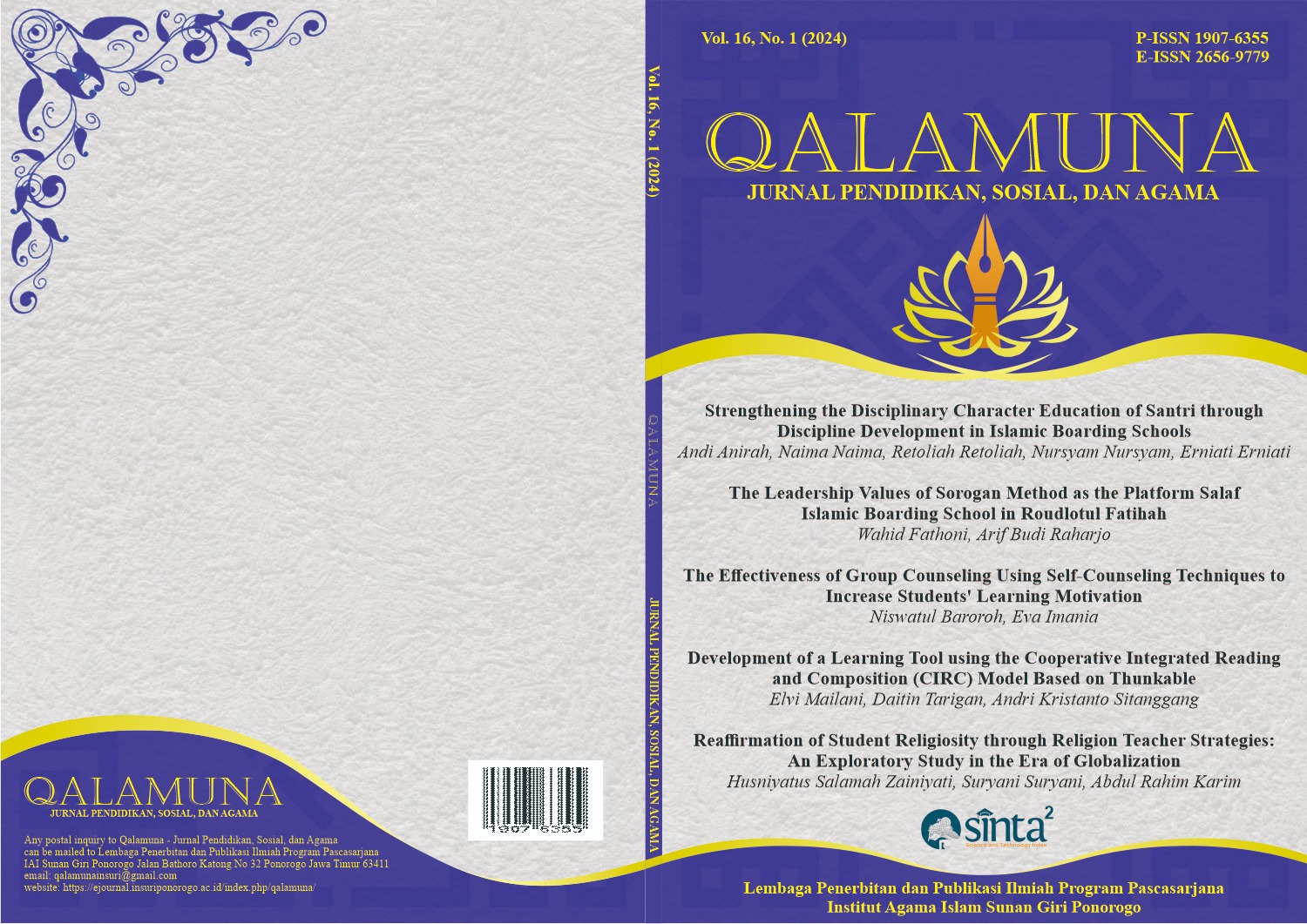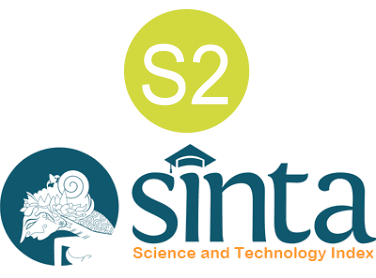Comparison of Fairness Conditions Comparison Study with Fuzzy C-Means and K-Means Methods
DOI:
https://doi.org/10.37680/qalamuna.v16i1.4992Keywords:
Comparison; Fairness; StudentsAbstract
The development of the character of fairness in teachers is influenced by the environmental conditions in which they grow and develop. This can be a factor that can influence the development of the fair character of teachers in the provinces of Central Java and Lampung. Therefore, this research aims to explore the fairness conditions among teachers in Central Java and Lampung provinces through a comparative study. This research involved 970 teachers spread across the islands of Java and Sumatra. The cluster sampling technique was used to take research subjects. The Comparison research method with The Fuzzy C-Means and K-Means Methods was carried out to obtain evidence regarding the fairness characteristics in teachers in Central Java and Lampung Provinces. The system testing results using the Silhouette coefficient method produced values of 0.278 (Fuzzy C-Means) and 0.287 (K-Means), respectively. This value shows that K-Means outperforms Fuzzy C-Means because its value is close to 1. Furthermore, K-Means and Fuzzy C-Means obtain scores of 0.384 and 0.224, respectively, when evaluated with DBI. It can be concluded that Fuzzy C-means is superior to K-means because the lower DBI results show a good value close to zero. These results contribute to advocates of psychological assistance for teachers, that the characteristics of fairness conditions for teachers in the provinces of Lampung and Central Java are different. This analysis provides valuable insight into understanding the factors that influence teacher fairness in the two provinces and provides a basis for developing policies that are more effective in improving conditions of fairness in the education sector.
References
Bronfenbrenner, U. (1986). "Ecology of the family as a context for human development Research perspectives," Developmental Psychology, 22 (6).
Bronfenbrenner, U., Morris, P. A. (1998).The Ecology of Developmental Processes. In W. Damon (Series Ed.) & R. M. Lerner (Vol. Ed.), Handbook of Child Psychology: Vol. 1: Theoretical Models of Human Development.New York: Wiley
Coyne, I., Gopaul, A. M., Campbell, M., Pankász, A., Garland, R., & Cousans, F. (2019). Bystander responses to bullying at work: The role of mode, type, and relationship to target. Journal of Business Ethics, 157(3), 813-827.
Fall, K. A., Holden, J. M., & Marquis, A. (2017). Theoretical models of counseling and psychotherapy. Taylor & Francis.
Jain, A. K. (2010). "Data clustering: 50 years beyond K-means." Pattern Recognition Letters, 31(8), 651-666.
Jamel, A., & Akay, B. (2019). A survey and systematic categorization of parallel k-means and fuzzy-c-means algorithms. Computer Systems Science and Engineering, 34(5), 259-281.
Kumar, V., & Reddy, C. V. (2016). "Performance analysis of K-means and fuzzy C-means clustering algorithms with reference to CURE algorithm." International Journal of Computer Applications, 135(1), 1-4.
Lopez, S. J., Pedrotti, J. T., & Snyder, C. R. (2018). Positive psychology: The scientific and practical explorations of human strengths. Sage publications.
Mahfud, A., Wibowo, M. E., Mulawarman, M., & Japar, M. (2023). Evidence of the validity of the fairness character scale for adolescence: A Confirmatory Factor Analysis (CFA) technique. Psikohumaniora: Jurnal Penelitian Psikologi, 8(1), 35-50.
Olweus, D. (2016). Cyberbullying: A critical overview. Aggression and Violence, 235-250.
Peguero, A. A., & Bracy, N. L. (2015). School order, justice, and education: Climate, discipline practices, and dropping out. Journal of research on adolescence, 25(3), 412-426.
Pratiwi, R. D., & Iskandar, M. (2020). "Kajian Algoritma K-Means dan Fuzzy C-Means pada Penentuan Kelayakan Penerima Bantuan Sosial PKH (Program Keluarga Harapan)." Jurnal Nasional Informatika dan Teknologi Informasi (JNI), 2(1), 10-16.
Rana, S., & Sahu, S. (2019). "Comparative Study of K-Means and Fuzzy C-Means Clustering Algorithms." International Journal of Computer Applications, 975(8887), 1-4.
Saydam, M. (2018). Research on Turkish teaching course books as a foreign language in terms of word teaching strategies [Unpublished Master Thesis]. Yıldız Technical University Graduate School of Social Sciences, Istanbul.
Seligman, M. E. P. (2019). Positive psychology: A personal history. Annual Review of Clinical Psychology, 15(1), 1–23. https://doi.org/10.1146/annurev-clinpsy-050718-095653
Sivo, S., Shannon, K., Fox, J., Taub, G., & Robinson, E. (2017, July). Structural analysis of character education: A cross-cultural investigation. In School Psychology Forum, Research in Practice (Vol. 11, No. 2, pp. 34-44). National Association of School Psychologists.
Sungheetha, D. A. (2020). Gtikf-gabor-transform incorporated k-means and fuzzy c means clustering for edge detection in ct and mri. Journal of Soft Computing Paradigm, 2(2), 111-119.
Suparwi, S. (2014). Perilaku bullying guru ditinjau dari persepsi pola asuh otoriter dan kemampuan berempati. INFERENSI: Jurnal Penelitian Sosial Keagamaan, 8(1), 159-179.
Wang, H., & Zhang, D. (2018). "A Survey of K-means Clustering Algorithm." In 2018 IEEE 3rd Advanced Information Technology, Electronic and Automation Control Conference (IAEAC) (pp. 1781-1784). IEEE.
Wagner, L. (2019). Good character is what we look for in a friend: Character strengths are positively related to peer acceptance and friendship quality in early adolescents. The Journal of Early Adolescence, 39(6), 864-903.
Wijaya, H. D., & Hariadi, M. (2016). "Perbandingan Algoritma K-Means dan Fuzzy C-Means untuk Pengelompokkan Data Gizi Anak Balita di Kabupaten Bantul." Jurnal Pengembangan Teknologi Informasi dan Ilmu Komputer, 1(11), 4745-4754.
Wiharto, W., & Suryani, E. (2020). The comparison of clustering algorithms K-means and fuzzy C-means for segmentation retinal blood vessels. Acta Informatica Medica, 28(1), 42.
Wilbur, K., Snyder, C., Essary, A. C., Reddy, S., Will, K. K., & Saxon, M. (2020). Developing workforce diversity in the health professions: a social justice perspective. Health Professions Education, 6(2), 222-229.
Yulianto, T., & Santoso, A. B. (2019). "Perbandingan Metode K-Means dan Fuzzy C-Means Clustering pada Data Mining Kuesioner Program Studi." Jurnal Penelitian Pos dan Informatika, 9(2), 131-140.
Zhou, K., & Yang, S. (2020). Effect of cluster size distribution on clustering: a comparative study of k-means and fuzzy c-means clustering. Pattern Analysis and Applications, 23, 455-466.
Downloads
Published
How to Cite
Issue
Section
License
Authors who submit manuscript retain its copyright and grant publisher right of first publication licensed under a Creative Commons Attribution-ShareAlike 4.0 International License (CC BY-SA 4.0) that allows others to access (search, read, download, and cite), share (copy and redistribute the material in any medium or format) and adapt (remix, transform, and build upon any material) the work for any lawful purpose, even commercially with an acknowledgement of the work's authorship and initial publication in Qalamuna: Jurnal Pendidikan, Sosial, dan Agama.












